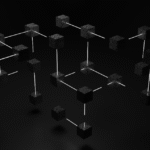 Layer 1 blockchains form the backbone of the decentralized digital ecosystem. They are the original networks like Bitcoin and Ethereum that provide the essential infrastructure for recording transactions and maintaining security through consensus mechanisms such as Proof of Work (PoW) or Proof of Stake (PoS). These fundamental chains are crucial because they enable the development of decentralized applications (dApps) and manage the native tokens used within their respective ecosystems.
Layer 1 blockchains form the backbone of the decentralized digital ecosystem. They are the original networks like Bitcoin and Ethereum that provide the essential infrastructure for recording transactions and maintaining security through consensus mechanisms such as Proof of Work (PoW) or Proof of Stake (PoS). These fundamental chains are crucial because they enable the development of decentralized applications (dApps) and manage the native tokens used within their respective ecosystems.
Challenges and Scalability Solutions
Despite their foundational importance, Layer 1 blockchains face significant challenges, primarily related to scalability. As the network of users grows, the ability to process transactions efficiently becomes strained. For example, Bitcoin processes 4-7 transactions per second (TPS), while Ethereum can handle 15-30 TPS in optimal conditions. This limitation has spurred the development of various scalability solutions, including Layer 2 protocols like state channels and sharding, where the latter divides the database to distribute the load across smaller, manageable parts.
Security and Decentralization
Security is paramount in Layer 1 blockchains. By decentralizing the control across various nodes, these blockchains ensure that no single entity can manipulate or corrupt the network. The security model involves all participating nodes in validating transactions, which, while secure, contributes to the scalability issues as more nodes mean slower transaction verification times.
Innovations in Layer 1 Technology
Recent innovations within Layer 1 technologies focus on enhancing scalability without compromising security or decentralization. Techniques such as Adaptive State Sharding used by newer blockchains like Elrond can process over 100,000 TPS by dynamically adjusting the number of shards based on the network size and transaction volume. This method not only speeds up processing times but also maintains robust security by keeping validators rotating across shards, reducing the risk of shard takeovers.
Interoperability Between Chains
Interoperability is another critical area of innovation in Layer 1 blockchains. It allows different blockchains to communicate and share information, facilitating the transfer of assets across various networks. This capability is vital for creating a more connected and efficient blockchain ecosystem, enabling diverse applications to operate across multiple chains without siloing assets or information.
The Future of Layer 1 Blockchains
The continuous evolution of Layer 1 blockchains is paving the way for more sophisticated applications in finance, digital identity, and beyond. As these technologies mature, they hold the promise of creating a fully decentralized digital world where financial systems and digital interactions are transparent, inclusive, and secure. The integration with technologies like DeFi, NFTs, and more shows the potential for a vast expansion in how we interact with digital assets and create economic opportunities.
Layer 1 blockchains, despite their challenges, remain the cornerstone of the blockchain and crypto industry. Ongoing advancements in technology are gradually overcoming limitations, making blockchain technology more scalable, secure, and efficient. As the industry evolves, the role of Layer 1 in underpinning the future digital economy becomes increasingly vital.
Discover Kenson Investments
Explore blockchain assets with Kenson Investments, your trusted source for digital asset strategy. We focus on transparency and client satisfaction. We offer crypto and digital asset portfolio services for startups and enterprises.
Trust us for innovative solutions in managing blockchain assets!














